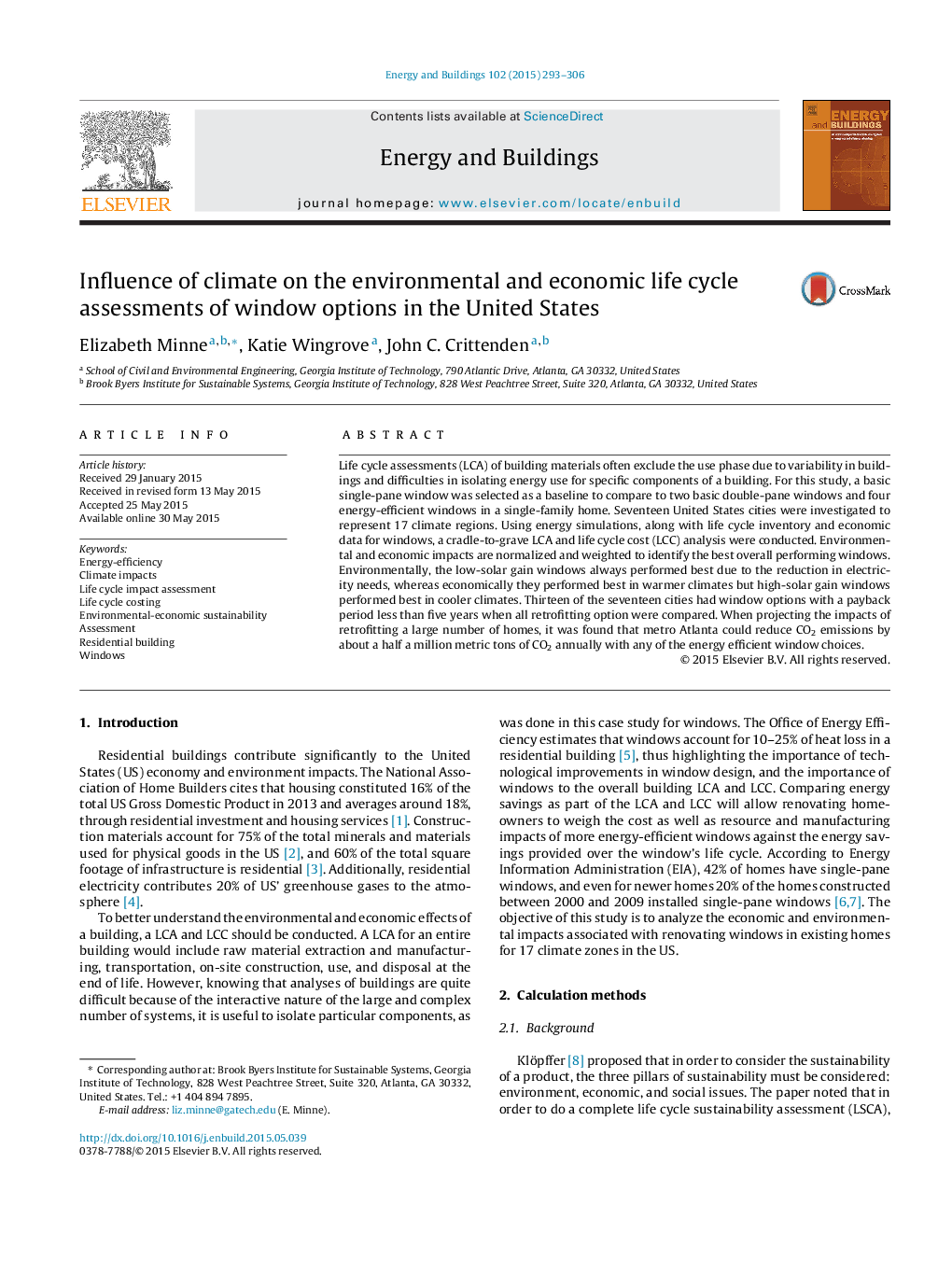| Article ID | Journal | Published Year | Pages | File Type |
|---|---|---|---|---|
| 262543 | Energy and Buildings | 2015 | 14 Pages |
•Life cycle impact assessment and costing were used to analyze windows.•Extreme climates saw significantly larger energy savings from retrofitting windows.•Low-solar gain windows were best environmentally due to electricity reductions.•Each climate had a window choice which had a payback period of 10 years or less.•Retrofitting Atlanta's windows would reduce CO2 emissions by 0.5 MMT a year.
Life cycle assessments (LCA) of building materials often exclude the use phase due to variability in buildings and difficulties in isolating energy use for specific components of a building. For this study, a basic single-pane window was selected as a baseline to compare to two basic double-pane windows and four energy-efficient windows in a single-family home. Seventeen United States cities were investigated to represent 17 climate regions. Using energy simulations, along with life cycle inventory and economic data for windows, a cradle-to-grave LCA and life cycle cost (LCC) analysis were conducted. Environmental and economic impacts are normalized and weighted to identify the best overall performing windows. Environmentally, the low-solar gain windows always performed best due to the reduction in electricity needs, whereas economically they performed best in warmer climates but high-solar gain windows performed best in cooler climates. Thirteen of the seventeen cities had window options with a payback period less than five years when all retrofitting option were compared. When projecting the impacts of retrofitting a large number of homes, it was found that metro Atlanta could reduce CO2 emissions by about a half a million metric tons of CO2 annually with any of the energy efficient window choices.
Graphical abstractFigure optionsDownload full-size imageDownload as PowerPoint slide
